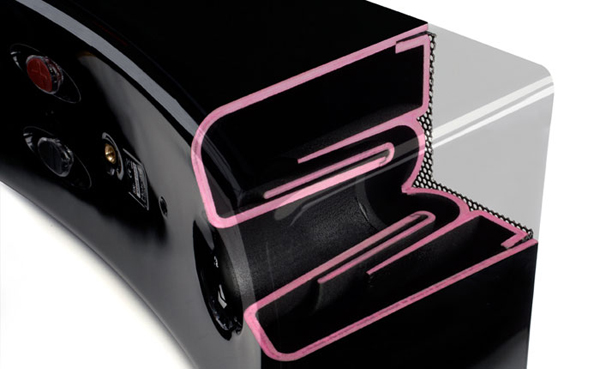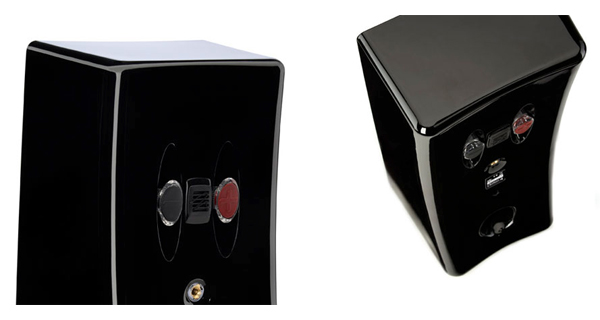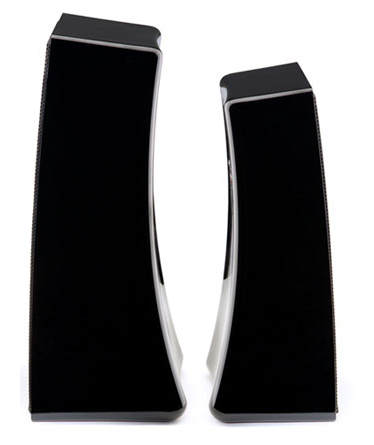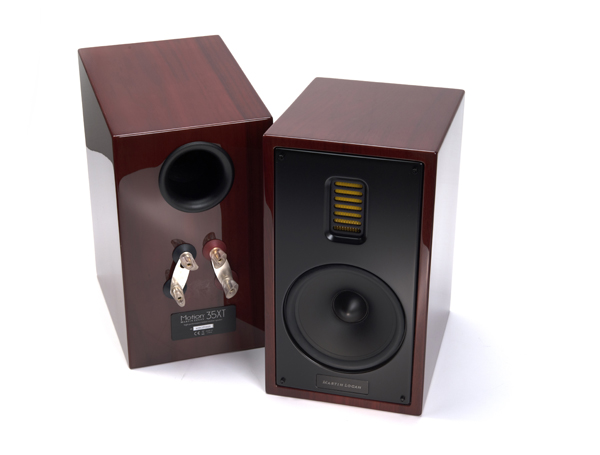 Many people know MartinLogan for its svelte, even avant-garde-looking electrostatic floorstanding speakers, which have earned the company a large and dedicated fan base. But, like a good scientist at work, MartinLogan does not rest on their laurels, continuing to experiment with new designs, like the Motion 35XT, that give potential customers great sound for the dollar. These speakers are designed to sound great as a stereo pair or with other speakers in the Motion line as part of a home-theater setup.
Many people know MartinLogan for its svelte, even avant-garde-looking electrostatic floorstanding speakers, which have earned the company a large and dedicated fan base. But, like a good scientist at work, MartinLogan does not rest on their laurels, continuing to experiment with new designs, like the Motion 35XT, that give potential customers great sound for the dollar. These speakers are designed to sound great as a stereo pair or with other speakers in the Motion line as part of a home-theater setup.
Under the Microscope
These mini Martins combine the brand’s Folded Motion Transducer tweeter with a more conventional-looking 6.5-inch woofer sporting an aluminum cone and ported out the back. The 35XT specifications state that the frequency response ranges from 50 Hz all the way up to 25 kHz. Into a 4-ohm load, they can handle amplifiers delivering 20 to 250 watts. Each speaker measures 13.5 inches tall, 7.6 inches wide and 11.8 inches deep, including the length of the binding posts. With solid construction and a substantial magnet for drivers, each weighs in at 18.5 lbs, which is relatively hefty for speakers this size.
Appearance-wise, the speakers don’t command the sculpture-like attention that their big electrostatic brothers do; the XT form factor is nondescript by comparison. ML finishes the cabinets in piano black or black cherrywood gloss. The last visual element to consider is the metal perforated grilles, which lend the speakers a look similar to ML’s electrostats, though they are magnetically attached and can be easily removed if desired. (Sonically, I found little difference with the grilles on or off.) But if you have small children who enjoy pushing elevator buttons and doorbells, the exposed center of a woofer cone can look mighty tempting.
Experimentation
As with ML’s ESL speakers, the XT’s manual offers concise setup instructions. Each speaker comes with four adhesive pads for easy grip on a shelf or a speaker stand. Once the general location is determined, ML suggests toeing in the speakers directly at the listener, which works splendidly in my listening room with the tweeters at ear level. The size of your room will determine how close you place the speakers to the side walls to maximize imaging and bass performance.
The speakers are easily connected to an amp, with ML’s oval-shaped five-way binding posts making light work of torquing down the speaker cables without damaging the cable or binding post. Two sets of binding posts allowing for bi-wiring or bi-amplification, should the listener prefer that configuration. The binding posts are offset on the speaker body, which makes this task even easier, whether you choose bi-wire or single-wire operation.
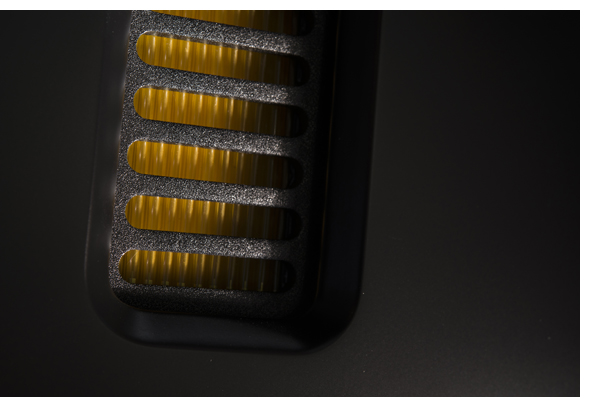
Testing in Vivo
The MLs immediately impress with their ability to disappear into the soundstage and music drifting in all directions around the speakers. The resulting sound portrayal enables a wide left-to-right stereo image complemented by an equally compelling sense of depth. Depending on the recording, there are some instances where musical elements project well in front of the speakers.
The 35XTs uncover a lot of fine detail and nuance in recordings, which contributes to the sense of ambient sound around them. At the same time, they do not lean toward ear-singing fatigue, a testament to ML’s years of ESL design and voicing. In the context of gear at my disposal, female vocals retain a natural, non-exaggerated musical presence, as demonstrated through Pink Martini’s album Hang On Little Tomato. Cymbal shimmer, horns blasts, harp plucks and piano notes showcase the speakers’ high- and mid-frequency extension.
As with most small-box designs, bass has its limits, so those craving deep and powerful bass might consider alternate or supplemental speaker options. Below 50 Hz, bass loses its growl through the 35XTs and a subwoofer like those offered by ML will pick up the slack. But what bass the 35XTs do reproduce comes in tight and tuneful. Like a seat further back in an auditorium, drum impacts sound quite real, but they lack an up-close level of punch and slam. Electronica tracks from Deadmau5 and Armin Van Buuren offer plenty of snap and excitement.
The balance of all these elements proves delightful during long listening sessions. These speakers do offer some surprises, as guitar strums and background vocals spring forth from the blackness and into the periphery.
Perpetual Motion
Though ML is known better for its more expensive ESL speakers, it’s marvelous to see the company price a set of speakers under $1,200, putting them into the reach of many audio enthusiasts seeking high-quality monitors. The gloss-finished wooden cabinets and metal speaker grilles alone give the outward impression of a more expensive design. And of course, fantastic sonics for their price point reinforce that assessment.
Used as a stereo pair, the ML 35XT speakers offer a lot of sound for the dollar. Other than limits to bass frequencies, the rest of the audio spectrum proves very enjoyable. The speakers may even beguile a listener toward couch-lock, repeating the phrase, “Okay, I’ll play just one more song.”
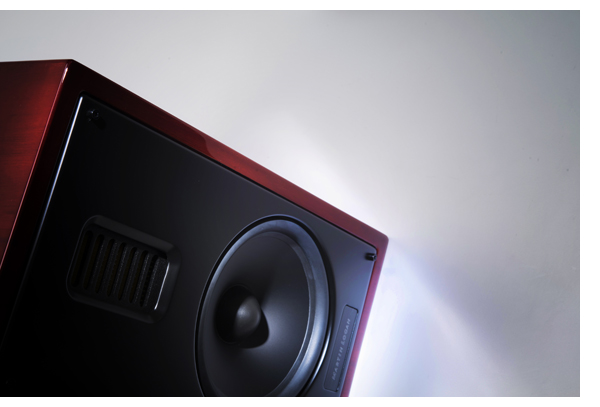
For those who want a stereo pair of speakers now, but are considering a home-theater setup in the future, it’s also great to know you are preserving your speaker investment. If budget allows later for the floorstanding version of the XTs, the smaller speakers can always be utilized as surrounds. In that scenario, a user can also rest assured knowing that the common drivers used in the Motion XT series speakers will offer a perfectly synergistic match. Our publisher has also mentioned that the XTs work very well as rear speakers in a multichannel system with MartinLogan ESLs as the front channels.
By simply filling out the warranty card and sending it to ML within 30 days of purchase, an owner receives a five-year insurance policy against problems with the speaker, which underlines the company’s commitment to its customers’ long-term satisfaction—whether an owner chooses the high-end or entry-level models. With that level of confidence behind the speaker, and the marvelous sound they produce, these ML speakers are a great option to consider.
Martin Logan Motion 35XT bookshelf speakers
MSRP: $1,200 per pair
PERIPHERALS
| Digital sources | Mac Mini dCS Debussy JRiver Media Center 20 Tidal music service |
| Analog source | SME 10 turntable with SME 10 tonearm and Dynavector 17D3 cartridge |
| Amplifiers | Burmester 911 MK3 Benchmark AHB2 |
| Preamplifier | Coffman Labs G1-A |
| Speakers | Sonus faber Olympica III |
| Cables | Jena Labs |
| Power | Running Springs Audio Haley RSA Mongoose power cords |
| Accessories | ASC tube traps Mapleshade Samson audio racks |



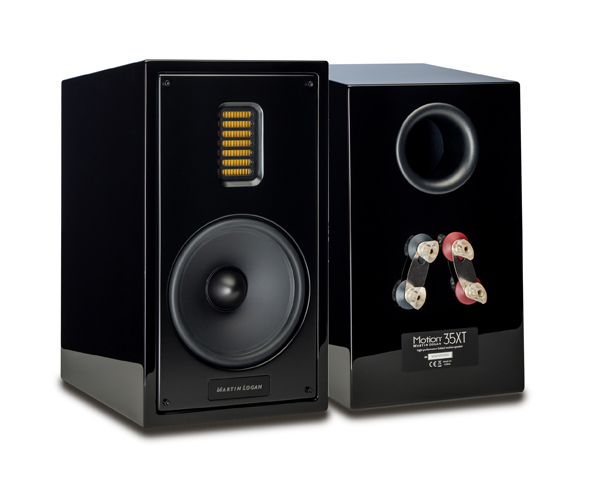 MartinLogan continues to expand their phenomenal Motion series of loudspeakers to the new 35XTs you see here, featuring a 6.5” woofer and their incredible folded motion (ribbon) tweeter, all in a solid wood cabinet, available in a variety of colors, including high gloss black.
MartinLogan continues to expand their phenomenal Motion series of loudspeakers to the new 35XTs you see here, featuring a 6.5” woofer and their incredible folded motion (ribbon) tweeter, all in a solid wood cabinet, available in a variety of colors, including high gloss black.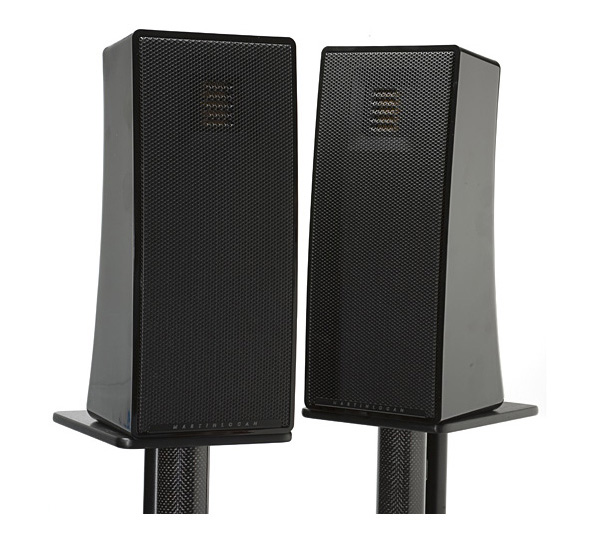 I must admit, I’m almost never impressed with what I hear at audio shows, and it’s not for the manufacturers’ lack of trying. It’s always tough to hear anything decently at a show, even if the room is set up fairly well. But at last year’s CEDIA convention, there was something that really blew me away, the final prototypes of MartinLogan’s new Motion series, especially when I saw how tiny they were.
I must admit, I’m almost never impressed with what I hear at audio shows, and it’s not for the manufacturers’ lack of trying. It’s always tough to hear anything decently at a show, even if the room is set up fairly well. But at last year’s CEDIA convention, there was something that really blew me away, the final prototypes of MartinLogan’s new Motion series, especially when I saw how tiny they were.